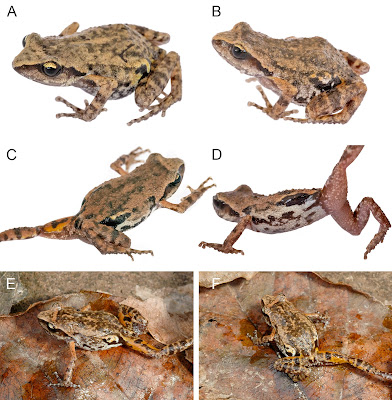 |
| Eotrechus konkakinh Tran, Zettel & Sites, 2023 DOI: 10.3897/dez.70.97117 |
Abstract
Species of the Asian genus Eotrechus Kirkaldy, 1902 (Hemiptera, Heteroptera, Gerromorpha, Gerridae, Eotrechinae) are atypical water striders because they live on the near-vertical rock surfaces of waterfalls. The taxonomy of the genus is revised and six new species are described: E. steineri sp. nov., E. kerberos sp. nov., E. thai sp. nov., E. konkakinh sp. nov., E. boukali sp. nov., and E. anderseni sp. nov. Supplementary descriptions of the apterous female and macropterous male of E. fuscus Basu, Chandra & Venkatesan, 2017 are provided. Additional and updated distribution data of species of Eotrechus are reported. Eotrechus fuscus is reported from Myanmar for the first time; E. brevipes is reported from Nepal for the first time; E. hygropetricus Andersen, 1982 is reported from southern Thailand for the first time, which extends the southernmost limit of the known distribution of the genus. A revised key to the species of Eotrechus is also provided.
Key Words: Eotrechus, Gerridae, Gerromorpha, new species, taxonomy
 |
| In-situ photographs of Eotrechus. A. E. vietnamensis, apterous male, from Ha Giang Province, Vietnam; B. E. konkakinh sp. nov., apterous male, from Gia Lai Province, Vietnam. |
 |
| Eotrechus konkakinh sp. nov. |
 |
| Eotrechus konkakinh sp. nov., apterous male, from Gia Lai Province, Vietnam. |
Anh Duc Tran, Herbert Zettel and Robert W. Sites. 2023. Revision of the Genus Eotrechus Kirkaldy (Hemiptera, Heteroptera, Gerridae), with Descriptions of Six New Species. Deutsche Entomologische Zeitschrift. 70(1): 69-111. DOI: 10.3897/dez.70.97117











































